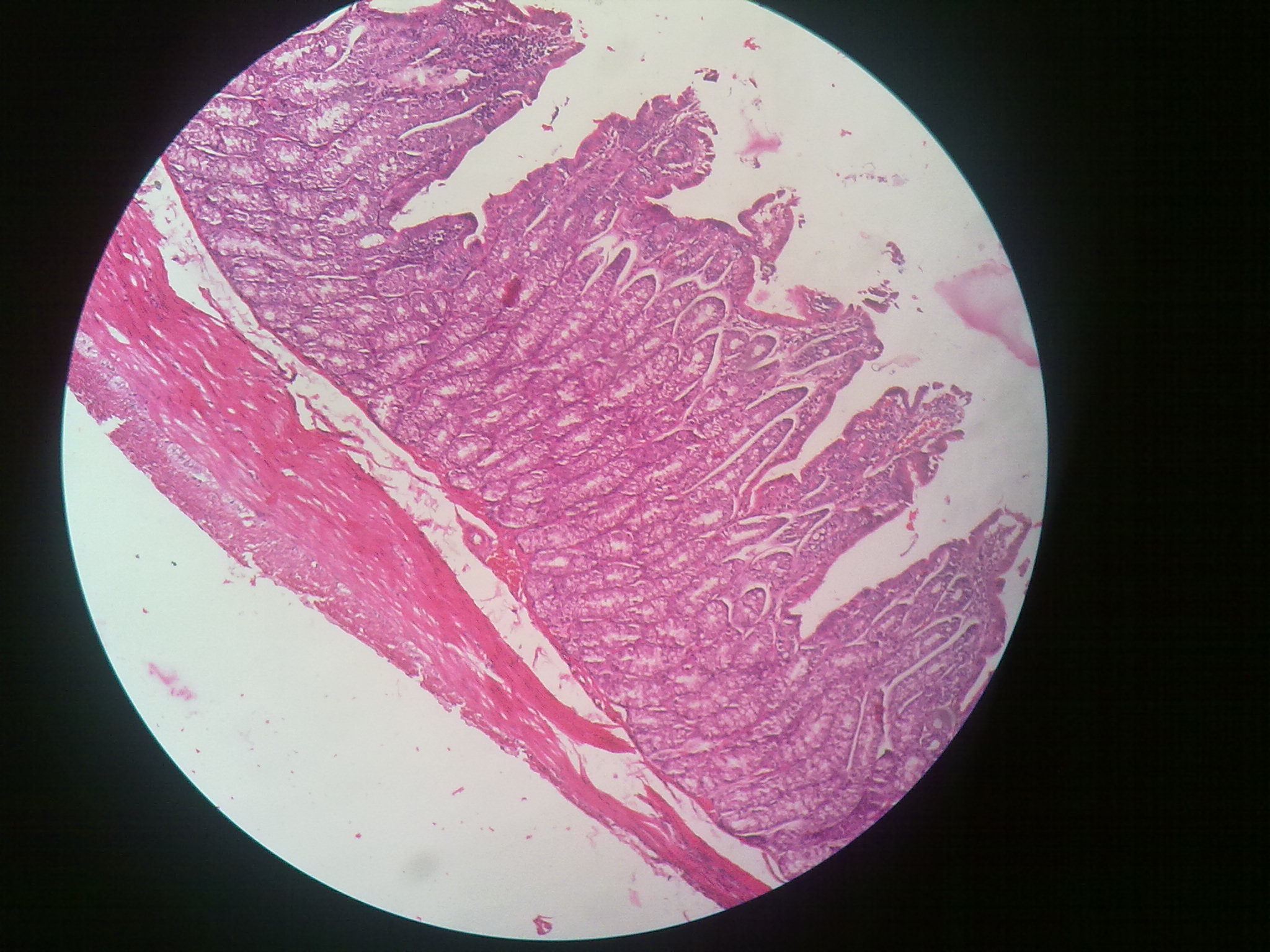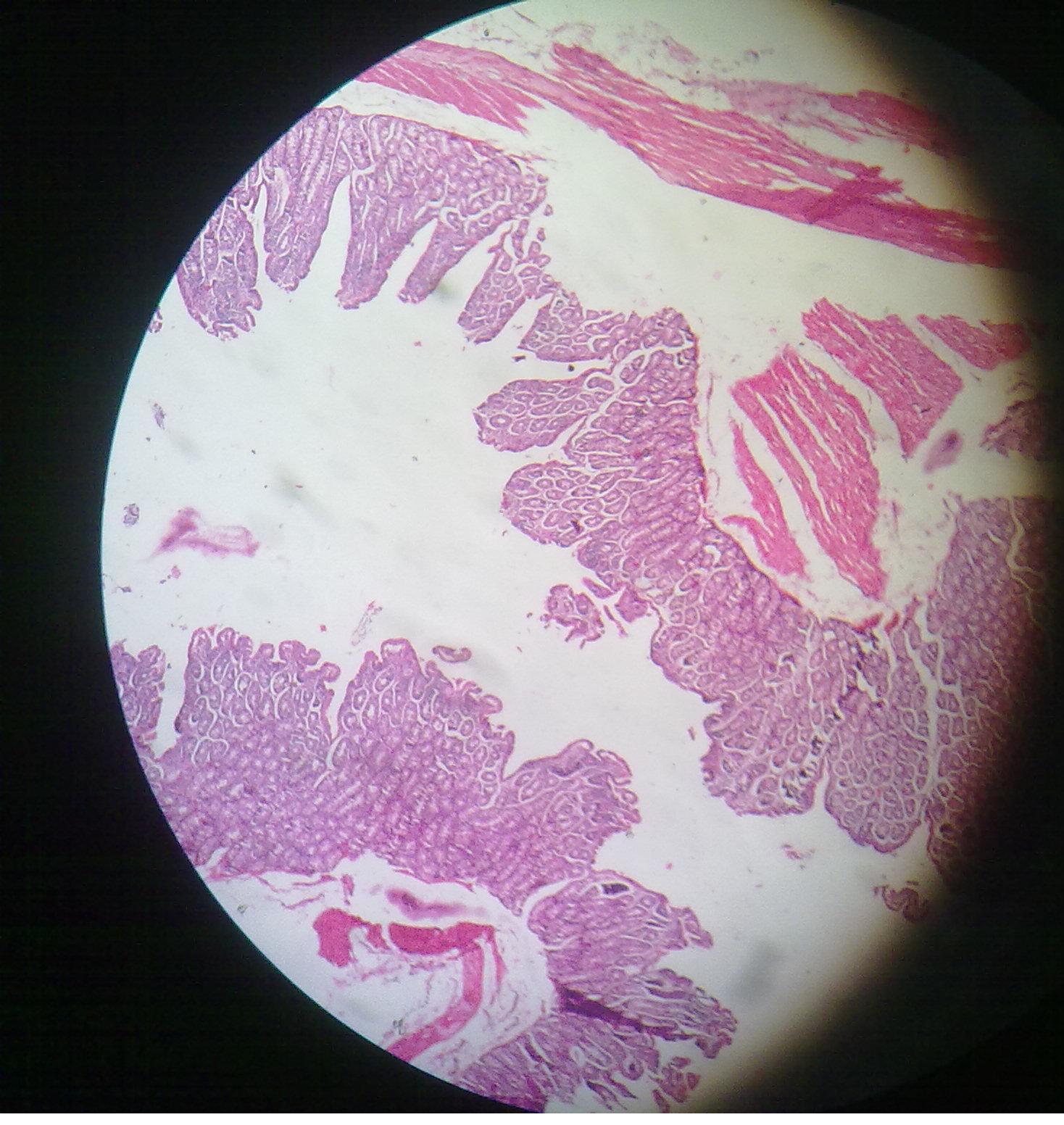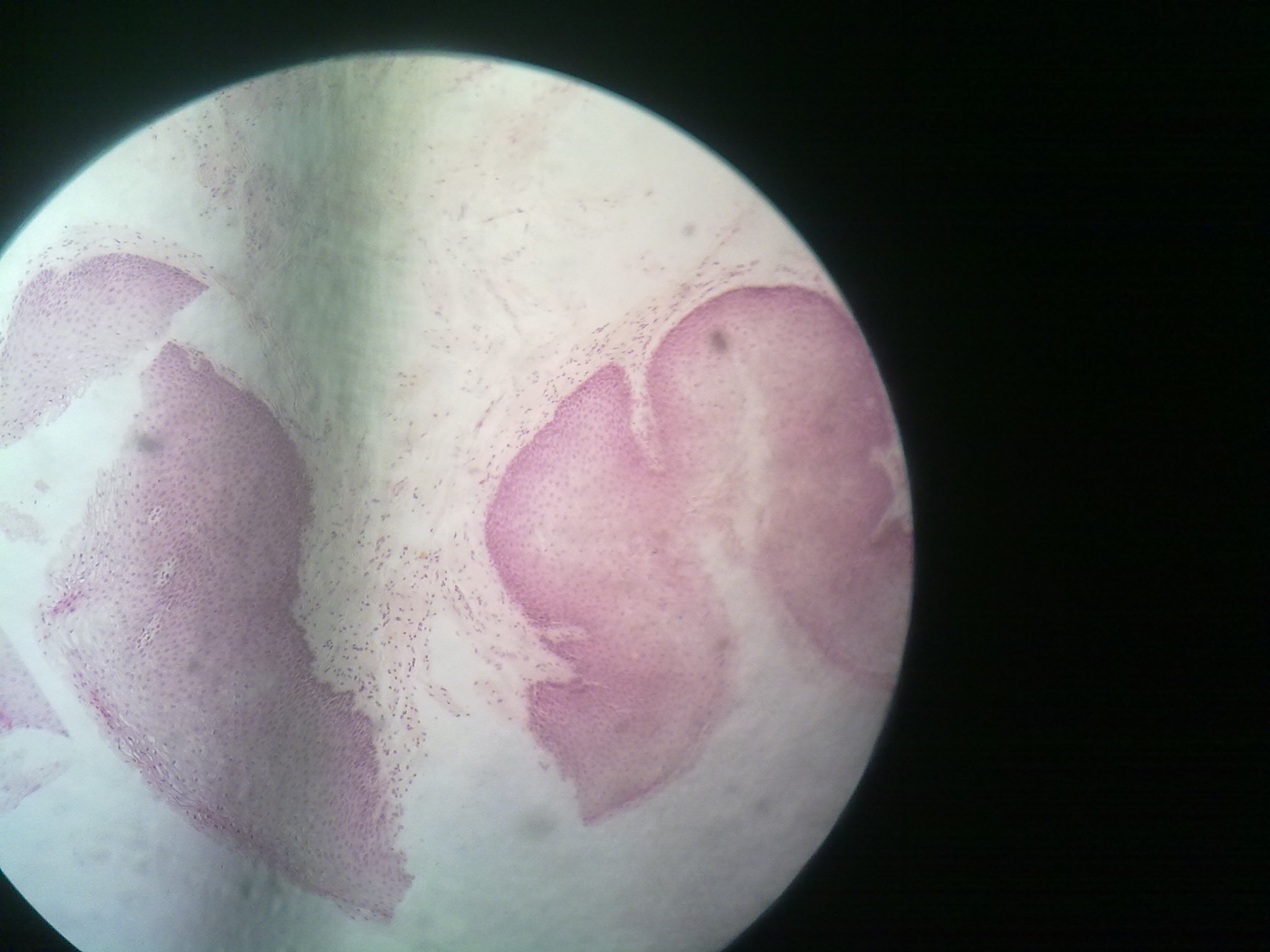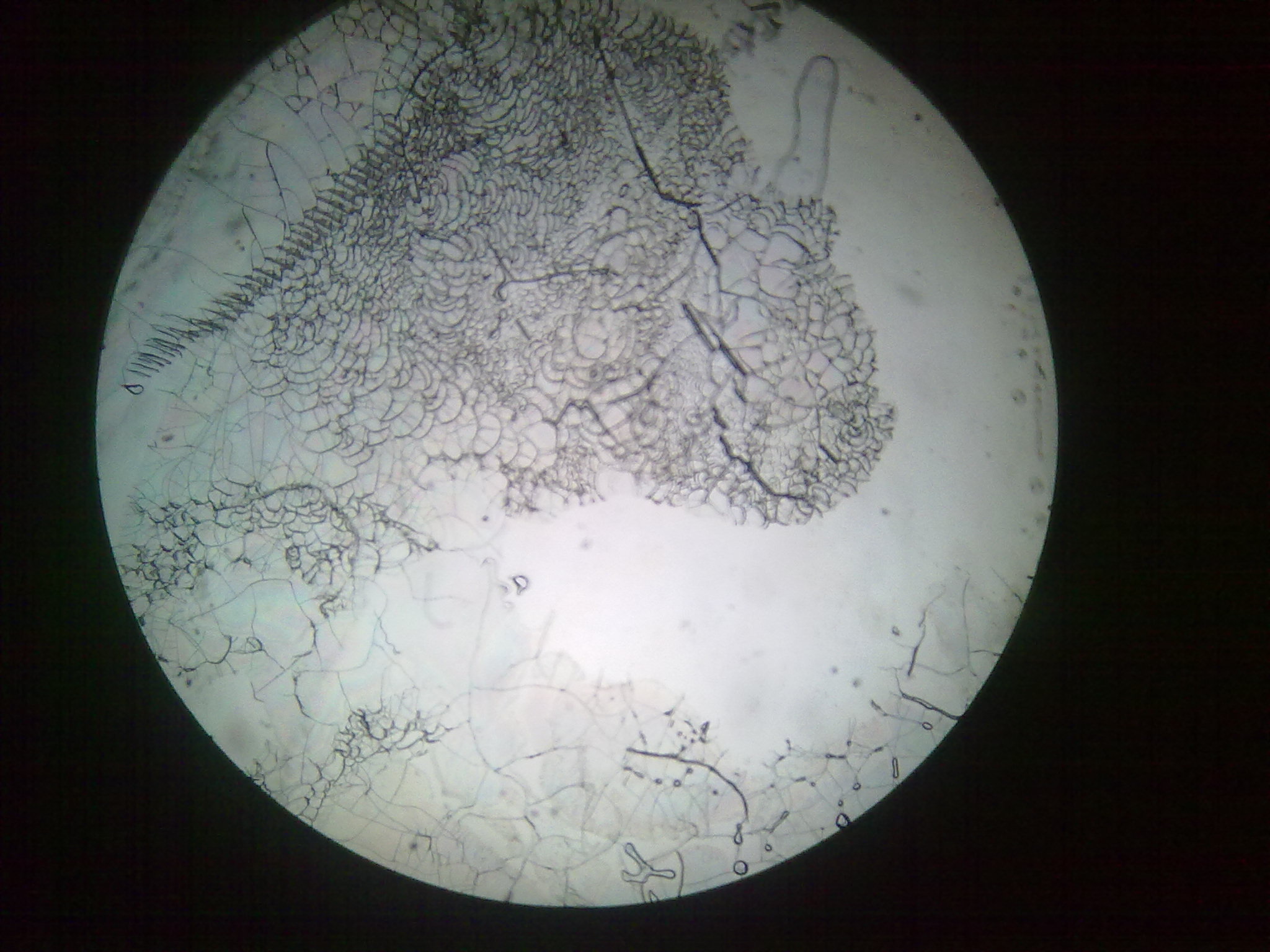Unique Features:
Colon:
Points of Identification:
1) The surface of the mucosa is relatively smooth as there are no plicae circulares or intestinal villi.
2) Crypts of Lieberkühn are present and usually longer and straighter than those of the small intestine.
3) Goblet cells account for more of the epithelial cells than in the small intestine
4) Considerable amounts of fat may be found in the submucosa
Anal Canal:
Points of Identification:
1) Mucosa has a characteristic surface relief of 5-10 longitudinal folds, the anal columns.
2) Small mucosal folds between the anal columns (anal valves) form the pectinate line.
3) Crypts disappear below the pectinate line and the epithelium changes from the tall, columnar type seen in other parts of the large intestine to a stratified squamous epithelium.
 howMed Know Yourself
howMed Know Yourself







last 2 slides are pointless because of inappropriate focusing. should be removed